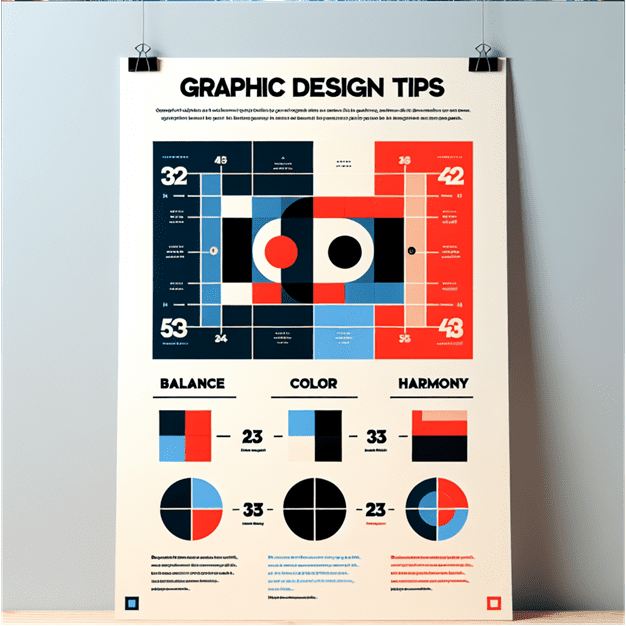Top Graphic Design Tips for Small Businesses


In the competitive landscape of small business, standing out is essential. One of the most effective ways to achieve this is through strong graphic design. Good design not only attracts customers but also communicates your brand message effectively. In this blog, we’ll explore top graphic design tips specifically tailored for small businesses, helping you create impactful visuals that resonate with your audience.
Understanding the Importance of Graphic Design
Graphic design plays a crucial role in how your brand is perceived. It encompasses everything from your logo and business cards to your website and social media graphics. Here’s why graphic design is vital for small businesses:
- First Impressions Matter: Your visual identity is often the first interaction potential customers have with your brand. A professional design can leave a lasting positive impression.
- Brand Recognition: Consistent design helps establish brand recognition. When customers see your logo or colors, they should immediately think of your business.
- Effective Communication: Good design conveys your message clearly. It can simplify complex information and enhance understanding.
- Building Trust: High-quality design fosters trust and credibility. Poor design can lead to skepticism about your products or services.
Top Graphic Design Tips for Small Businesses
1. Define Your Brand Identity
Before diving into design, clarify your brand identity. What values, mission, and personality do you want to convey? This foundation will guide your design choices. Consider creating a mood board that encapsulates your brand’s essence, including colors, fonts, and imagery that resonate with your audience.
2. Invest in Professional Design
While DIY design tools are accessible, investing in professional graphic design can yield better results. A skilled designer understands the nuances of design principles, ensuring your visuals are polished and effective. If hiring a designer is beyond your budget, consider freelance platforms where you can find talented designers at various price points.
3. Choose the Right Color Palette
Colors evoke emotions and influence perceptions. Choose a color palette that aligns with your brand values. For instance, blue often conveys trust, while green signifies growth. Limit your palette to 2-3 primary colors and a few accent colors to maintain cohesion across your designs.
4. Select Complementary Fonts
Typography plays a significant role in your brand’s voice. Choose fonts that reflect your brand personality and are easy to read. Limit the number of fonts to two or three: one for headings and another for body text. Consistency is key—use the same fonts across all platforms for a cohesive look.
5. Keep It Simple
Simplicity is the hallmark of effective design. Avoid clutter and ensure your visuals communicate your message clearly. Use ample white space to enhance readability and focus attention on key elements. Remember, less is often more in graphic design.
6. Create a Strong Logo
Your logo is a critical element of your brand identity. It should be memorable, versatile, and scalable. Aim for a design that works well in various sizes and formats, from business cards to billboards. Conduct research and gather feedback to refine your logo design.
7. Use High-Quality Images
Whether it’s for social media, your website, or marketing materials, always use high-quality images. Blurry or pixelated images can detract from your brand’s professionalism. Invest in professional photography or use high-resolution stock images that align with your brand message.
8. Optimize for Different Platforms
Designs should be tailored for various platforms, from your website to social media and print materials. Each platform has different requirements for size and format. Ensure your graphics look great regardless of where they are displayed, maintaining consistency in branding.
9. Incorporate Visual Hierarchy
Visual hierarchy guides the viewer’s eye and helps them understand the importance of elements within your design. Use size, color, and placement to create a clear hierarchy. For example, larger text or bold colors can highlight key messages, while secondary information can be more subdued.
10. Gather Feedback and Iterate
Design is an iterative process. Share your designs with trusted colleagues, friends, or even your target audience to gather feedback. Constructive criticism can help you identify areas for improvement and refine your visuals.
Tools for Small Business Graphic Design
- Canva: A user-friendly platform that offers templates for various design needs.
- Adobe Spark: Allows you to create graphics, web pages, and videos easily.
- Figma: Great for collaborative design work, especially for teams.
- Visme: A versatile tool for creating presentations, infographics, and reports.
Conclusion
Graphic design is an invaluable asset for small businesses looking to make a mark in their industry. By implementing these tips, you can create visuals that not only attract attention but also communicate your brand’s message effectively. Remember, strong design is not just about aesthetics; it’s about building a connection with your audience.
At Vizible, we understand the unique challenges small businesses face. Our team of graphic design experts is here to help you craft visuals that resonate with your customers and elevate your brand. Contact us today to discover how we can bring your vision to life!

